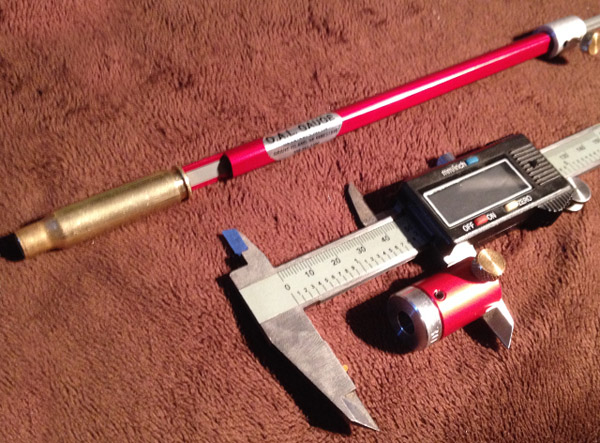 There's about a gajillion different tools out there for reloading. Most tools come in either manual / hand powered versions or a more expensive electric counterpart. For case preparation, you could spend a few hundred dollars on an electric prep station that has spinning heads for each step, or you can buy each tool individually and perform the steps by hand, and save a few extra pennies for powder, primers, bullets, or heck even a new press. One tool I've been using heavily thats gotten the job done and was relatively inexpensive is the Lyman Case Prep Multi-tool.
There's about a gajillion different tools out there for reloading. Most tools come in either manual / hand powered versions or a more expensive electric counterpart. For case preparation, you could spend a few hundred dollars on an electric prep station that has spinning heads for each step, or you can buy each tool individually and perform the steps by hand, and save a few extra pennies for powder, primers, bullets, or heck even a new press. One tool I've been using heavily thats gotten the job done and was relatively inexpensive is the Lyman Case Prep Multi-tool.
Case prepping has 4 steps after you've deprimed, resized and trimmed your casings. If you've trimmed the mouth back down to SAAMI specs after the brass has stretched from firing (every rifle cartridge stretches to some degree over time and repeated firing of same brass piece) then you should chamfer and debur the mouth. This gets rid of any ragged brass filings still clinging to the mouth, and also helps with easier bullet seating and proper chambering in the firearm. The Lyman Multi-tool has both deburrer and chamfer tool which you can thread into each end, letting you simply flip the tool over and complete both tasks with minimal effort, especially if you have a manual or electric way of spinning the brass, like a Lee Zip Trimmer or a case chuck bit for a drill.
Secondly if you are loading rifle rounds that have military primer crimps, you are very familiar with the bane of every reloaders existence. That is, until you have a tool that can ream those crimps out to a wider primer pocket. Lyman provides reamers for both large and small primer pockets (5.56 and 7.62x51 brass made for the military will most likely have the crimp) After several rotations with the tools, you'll be able to seat a new primer with little resistance. Also included are a pocket cleaner for both large and small pockets, which can help clean out carbon and dirt and ensure a full spark through the flashhole, and thusly a good powder burn.
Instead of fumbling with 6 different hand tools, or dropping a few hundo's on an electric case prep center, give this multi-tool a try. Its under 25 dollars and is easily stowed away, leaving more room for all the other tools, gauges, and components to clutter your bench.
Firearms Insider Reviews - 8 Key Points
Claim to Fame: Provides the reloader with all the essential case preparation accessories in one compact, double-ended storage tool.
Target Market: Reloaders who trim cases and or need to remove military primer crimps
FNBs (Features & Benefits of this product)
- Provides reloader with all the essential accessories
- All accessories located in one compact, double-ended storage tool
- Unique knurled handle unthreads in the middle to store all parts
- Includes inside and outside deburring tools, large and small primer pocket cleaners, and large and small primer pocket reamers
- Convenient and compact storage
What others are saying?:
“I used it to prep 100 cases recently. It's handy because all the bits can be stored inside the aluminum case/handle. The functionality is satisfactory because it works. The only drawback is that it is two major pieces (aluminum case) that thread together with bits that are also threaded in. As long as you work the tool in one direction, that's fine, but once you twist counterclockwise with the working end bound to the brass in any way (when chamferring and deburring)the parts start loosening (which is why I can see how the Lyman universal case prep kit with 8 dedicated tools might be preferred -- especially if you have the bench space for it and don't mind the extra cost). It made me wish for my solid, one-piece chamfering/deburring tool that was in the garage while I was leisurely (lazily) working the .308 brass in front of the TV. My solution was to de-thread the two halves apart and use them like two tools with the primer bits sitting on a paper towel. And with that being said, this tool was cheap to buy, does the job, does have a massive handle that prevents finger fatigue, and stores nice and tidy. It is more helpful than it is annoying, which is why, for the price, I would recommend it" -SteveH Amazon.com user
Price Point:
I need it now! Availability: Readily available at brownells.com or Amazon.com
Our Rating:
+-Knurled grip is plenty big enough for heavy use without hand cramps K +-Stores all parts inside to prevent lost bits +-Price is very affordable for 6 tools in one
--Threads loosen if primer pocket reamer or chamfer tool bind up and you rotate counterclockwise, requires acute but quick retightening.
Score: 8.5 Great










